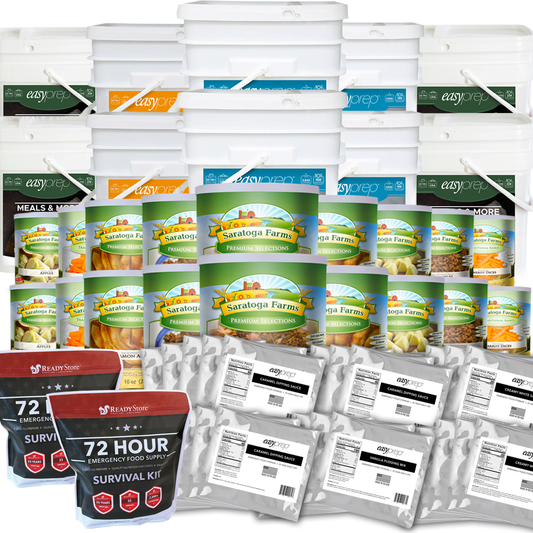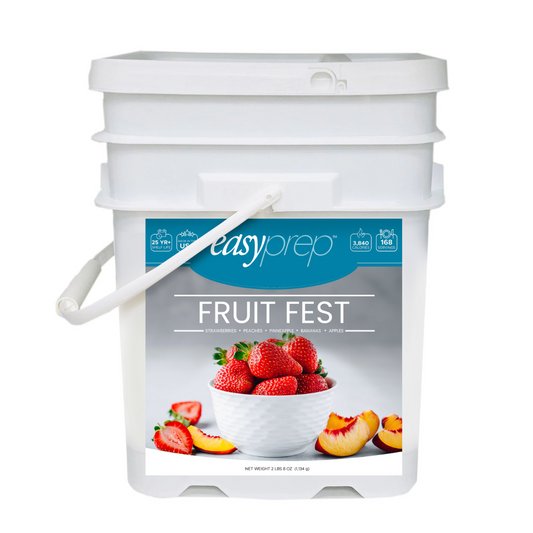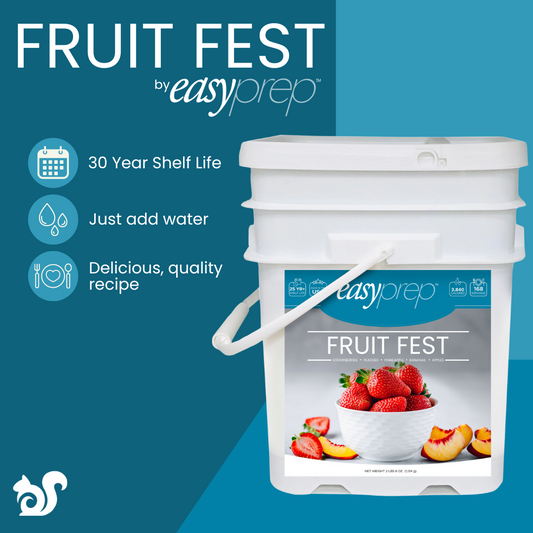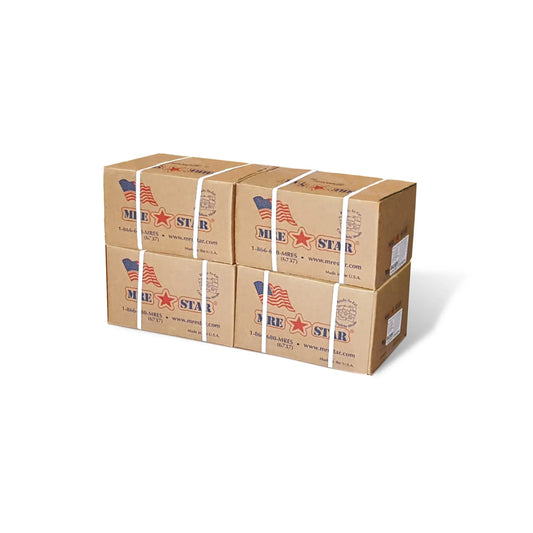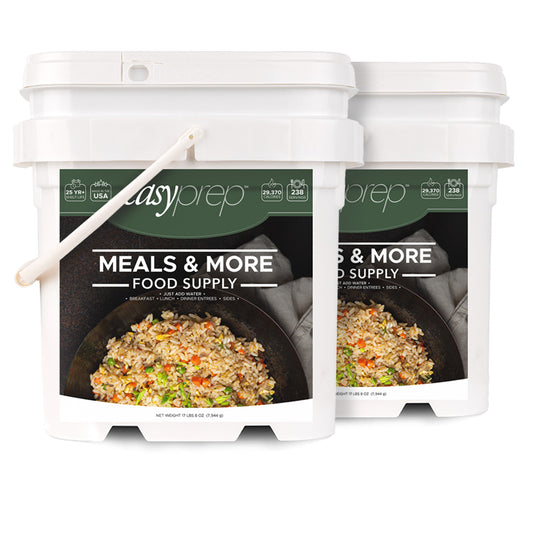The Incredible Edible Bug
17 Jan 2013
Imagine you’re lost in the wilderness and don’t have any means of hunting. You don’t have anything to help you fish. You might end up eating those creepy crawlers under your feet. That’s right - bugs!
In fact, bugs and insects can be very healthy. They are a great source of protein while low in carbohydrates and fats. In fact, one study showed that an ounce of crickets was a better source of protein than an ounce of beef!
But how do you know which bugs are edible? You don’t want to end up getting sick or die by eating a bug that is poisonous or bad for you. While there aren’t strict guidelines to insect meals and there are always exceptions to the rule, below, we’ve listed a few tips that might help you in a survival situation.
 Bugs to Avoid
One rule of thumb that most survivalists endorse is to avoid brightly colored insects. This is usually a way for bugs to say “Stay away from me.” If a bug is extremely pungent, it’s best to keep them away for your mouth. That shouldn’t be too hard right?
Insects that carry diseases - things like flies, ticks, mosquitoes - should be avoided. Many survivalist experts also caution against bugs that are hairy or fuzzy. Insects that can sting you are also typically avoided. You don’t want it to struggle on its way down.
What to Look For
There are basically 15 different orders of insects that are edible:
• Anoplura - This would be things like lice.
• Orthoptera - Examples are grasshoppers, locusts, crickets and cockroaches.
• Hemiptera & Homoptera - They are also known as tree bugs. They are things like cicades, aphids, planthoppers, leafhoppers and shield bugs.
• Hymenoptera - These are identified as sawflies, wasps, bees and ants.
• Diptera - Also known as flies, gnats and midges.
• Coleoptera - These include beetles and ladybugs.
• Lepidoptera - Butterflies and moths are edible.
• Megaloptera - Alderflies and dobsonflies are examples of Megaloptera.
• Odonata & Ephemetoptera - Dragonflies, mayflies and damselflies are in these orders
• Trichoptera - Caddisflies
• Plecoptera - Another name for stoneflies
• Neuroptera - Lacewings and antlions
• Isoptera - These are termites
Cooking Bugs
Many people will tell you that the trick to eating bugs is to cook them. Even if a bug has harmful toxins or venom, boiling will usually negate the effect. Many bugs with hard shells - things like beetles - can carry parasites and need to be cooked before eating.
Aside from making them safe to eat, cooking bugs also improves the taste. For example, ants usually have a bitter taste until they are boiled.
You can also take insects wings and legs off before cooking. These parts of the bugs aren’t usually full of much nutrition anyways and contribute to bad taste. Sometimes you can also remove the head and that will help.
What Bugs Do You Eat?
Have you ever tried eating bugs? How did it go? Comment below and share your experience.
Bugs to Avoid
One rule of thumb that most survivalists endorse is to avoid brightly colored insects. This is usually a way for bugs to say “Stay away from me.” If a bug is extremely pungent, it’s best to keep them away for your mouth. That shouldn’t be too hard right?
Insects that carry diseases - things like flies, ticks, mosquitoes - should be avoided. Many survivalist experts also caution against bugs that are hairy or fuzzy. Insects that can sting you are also typically avoided. You don’t want it to struggle on its way down.
What to Look For
There are basically 15 different orders of insects that are edible:
• Anoplura - This would be things like lice.
• Orthoptera - Examples are grasshoppers, locusts, crickets and cockroaches.
• Hemiptera & Homoptera - They are also known as tree bugs. They are things like cicades, aphids, planthoppers, leafhoppers and shield bugs.
• Hymenoptera - These are identified as sawflies, wasps, bees and ants.
• Diptera - Also known as flies, gnats and midges.
• Coleoptera - These include beetles and ladybugs.
• Lepidoptera - Butterflies and moths are edible.
• Megaloptera - Alderflies and dobsonflies are examples of Megaloptera.
• Odonata & Ephemetoptera - Dragonflies, mayflies and damselflies are in these orders
• Trichoptera - Caddisflies
• Plecoptera - Another name for stoneflies
• Neuroptera - Lacewings and antlions
• Isoptera - These are termites
Cooking Bugs
Many people will tell you that the trick to eating bugs is to cook them. Even if a bug has harmful toxins or venom, boiling will usually negate the effect. Many bugs with hard shells - things like beetles - can carry parasites and need to be cooked before eating.
Aside from making them safe to eat, cooking bugs also improves the taste. For example, ants usually have a bitter taste until they are boiled.
You can also take insects wings and legs off before cooking. These parts of the bugs aren’t usually full of much nutrition anyways and contribute to bad taste. Sometimes you can also remove the head and that will help.
What Bugs Do You Eat?
Have you ever tried eating bugs? How did it go? Comment below and share your experience.
 Bugs to Avoid
One rule of thumb that most survivalists endorse is to avoid brightly colored insects. This is usually a way for bugs to say “Stay away from me.” If a bug is extremely pungent, it’s best to keep them away for your mouth. That shouldn’t be too hard right?
Insects that carry diseases - things like flies, ticks, mosquitoes - should be avoided. Many survivalist experts also caution against bugs that are hairy or fuzzy. Insects that can sting you are also typically avoided. You don’t want it to struggle on its way down.
What to Look For
There are basically 15 different orders of insects that are edible:
• Anoplura - This would be things like lice.
• Orthoptera - Examples are grasshoppers, locusts, crickets and cockroaches.
• Hemiptera & Homoptera - They are also known as tree bugs. They are things like cicades, aphids, planthoppers, leafhoppers and shield bugs.
• Hymenoptera - These are identified as sawflies, wasps, bees and ants.
• Diptera - Also known as flies, gnats and midges.
• Coleoptera - These include beetles and ladybugs.
• Lepidoptera - Butterflies and moths are edible.
• Megaloptera - Alderflies and dobsonflies are examples of Megaloptera.
• Odonata & Ephemetoptera - Dragonflies, mayflies and damselflies are in these orders
• Trichoptera - Caddisflies
• Plecoptera - Another name for stoneflies
• Neuroptera - Lacewings and antlions
• Isoptera - These are termites
Cooking Bugs
Many people will tell you that the trick to eating bugs is to cook them. Even if a bug has harmful toxins or venom, boiling will usually negate the effect. Many bugs with hard shells - things like beetles - can carry parasites and need to be cooked before eating.
Aside from making them safe to eat, cooking bugs also improves the taste. For example, ants usually have a bitter taste until they are boiled.
You can also take insects wings and legs off before cooking. These parts of the bugs aren’t usually full of much nutrition anyways and contribute to bad taste. Sometimes you can also remove the head and that will help.
What Bugs Do You Eat?
Have you ever tried eating bugs? How did it go? Comment below and share your experience.
Bugs to Avoid
One rule of thumb that most survivalists endorse is to avoid brightly colored insects. This is usually a way for bugs to say “Stay away from me.” If a bug is extremely pungent, it’s best to keep them away for your mouth. That shouldn’t be too hard right?
Insects that carry diseases - things like flies, ticks, mosquitoes - should be avoided. Many survivalist experts also caution against bugs that are hairy or fuzzy. Insects that can sting you are also typically avoided. You don’t want it to struggle on its way down.
What to Look For
There are basically 15 different orders of insects that are edible:
• Anoplura - This would be things like lice.
• Orthoptera - Examples are grasshoppers, locusts, crickets and cockroaches.
• Hemiptera & Homoptera - They are also known as tree bugs. They are things like cicades, aphids, planthoppers, leafhoppers and shield bugs.
• Hymenoptera - These are identified as sawflies, wasps, bees and ants.
• Diptera - Also known as flies, gnats and midges.
• Coleoptera - These include beetles and ladybugs.
• Lepidoptera - Butterflies and moths are edible.
• Megaloptera - Alderflies and dobsonflies are examples of Megaloptera.
• Odonata & Ephemetoptera - Dragonflies, mayflies and damselflies are in these orders
• Trichoptera - Caddisflies
• Plecoptera - Another name for stoneflies
• Neuroptera - Lacewings and antlions
• Isoptera - These are termites
Cooking Bugs
Many people will tell you that the trick to eating bugs is to cook them. Even if a bug has harmful toxins or venom, boiling will usually negate the effect. Many bugs with hard shells - things like beetles - can carry parasites and need to be cooked before eating.
Aside from making them safe to eat, cooking bugs also improves the taste. For example, ants usually have a bitter taste until they are boiled.
You can also take insects wings and legs off before cooking. These parts of the bugs aren’t usually full of much nutrition anyways and contribute to bad taste. Sometimes you can also remove the head and that will help.
What Bugs Do You Eat?
Have you ever tried eating bugs? How did it go? Comment below and share your experience.


